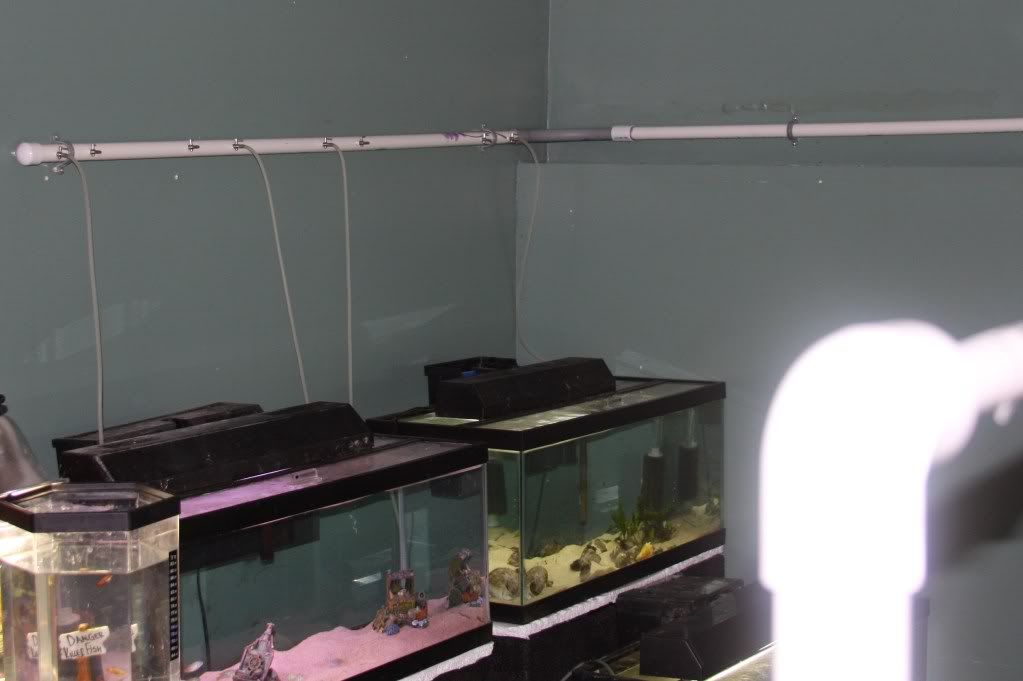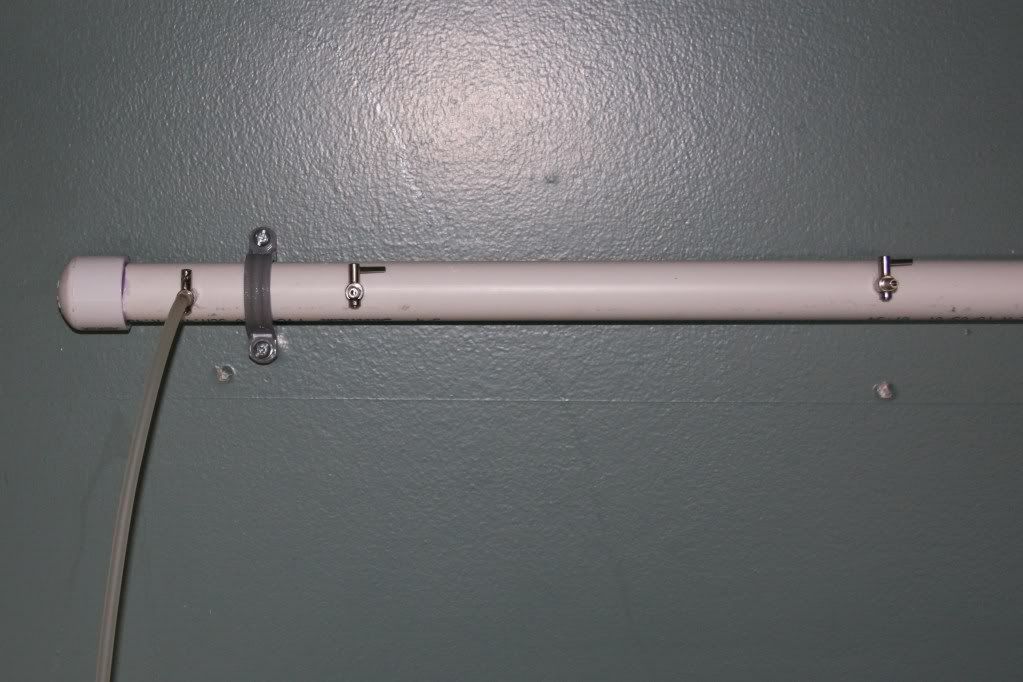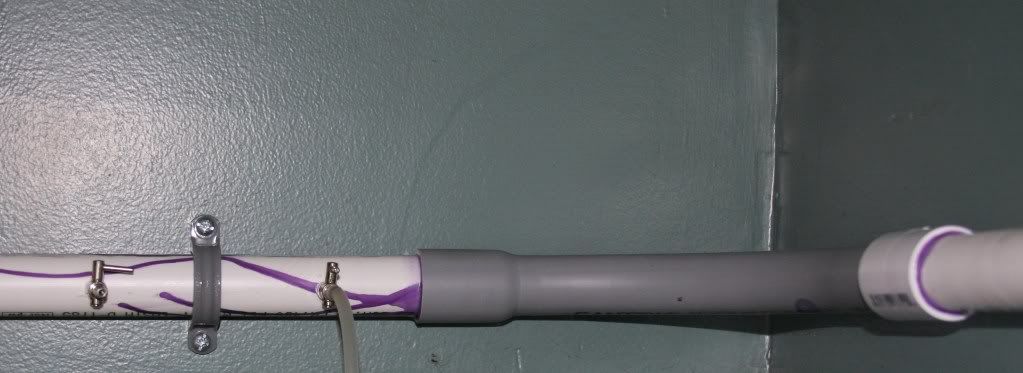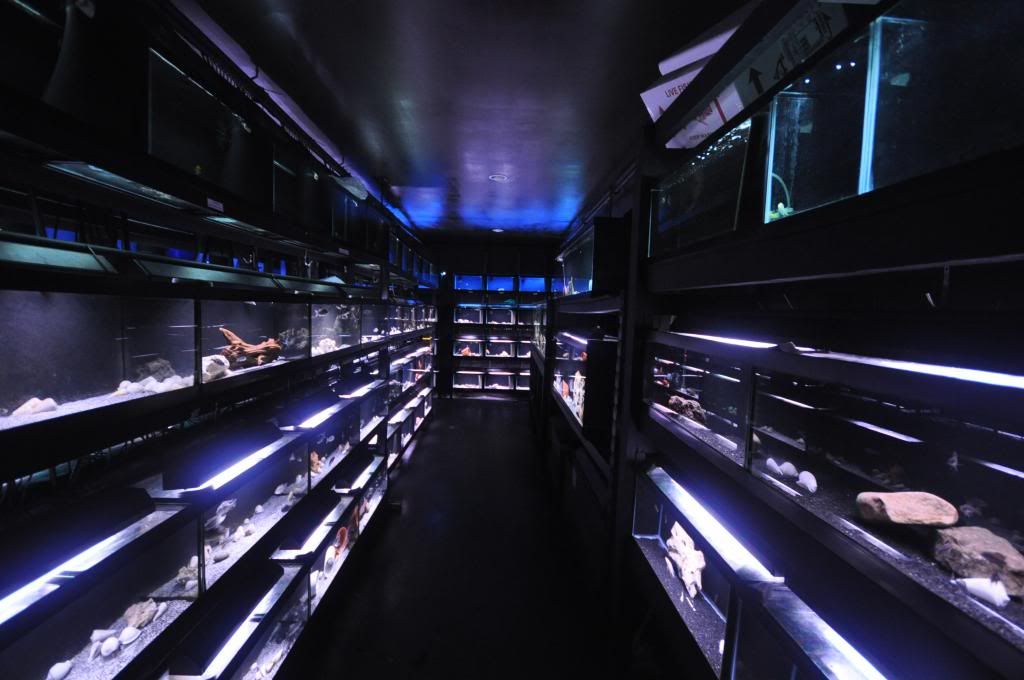Post by angel on Oct 26, 2009 11:29:43 GMT -6
Ok so here it is. First we have the pump mounted on a shelf above the highest point of tanks. This is to improve airflow and to prevent shock. They shouldn't be placed on the floor or anywhere that water can get into them should failure and backflow occur. Remember, if water would happen to back up through the lines, it won't flow to a point higher than its source without power pushing it there.

PVC pipes are hooked to a hose on the pump, and mounted to the wall on two sides and along the back. Up the middle is a stand fashioned from PVC to hold the pipe level.


Into each PVC pipe you need to install valves to attach air line to. This is done by drilling holes with a threaded drill bit, or buying a special tap to make the threads from Jehmco.
You will attach your airlines to each of these. Then put your sponge filters on the other end of the airline. Dennis used a bit of pipe thread tape to make sure the hole was sealed around each valve. I believe that was on suggestion from Jon.

In the corners, to improve airflow, ree123 suggested these electrical conduit sweeps. They're grey instead of white but who cares? We were later told it didn't make a lot of difference vs an elbow but it can't hurt. Also, if you don't like purple mess all over you'll want to get a different color of primer or be neat with it. Each pipe is connected to the next with the use of two materials--a purple solution that cleans and softens the pvc, and a glue to hold it together. Listen for leaks when the pump is up and running. Fix if necessary. Also listen at each of the valves.

Pump maintenance is easy. First, make sure it's sitting level on the shelf. If it isn't it'll make noise. When it's quiet, it should be level. Second, there's a filter in the top. Every six months take the filter out, wash it in soapy water, let it dry completely and put back. Or do like we've done and buy an extra filter. Every six months change the filter and wash the next one. When it's fully dry place it in a ziploc back and it's ready for the next change. They're only 4 bux.
And that's it!

PVC pipes are hooked to a hose on the pump, and mounted to the wall on two sides and along the back. Up the middle is a stand fashioned from PVC to hold the pipe level.


Into each PVC pipe you need to install valves to attach air line to. This is done by drilling holes with a threaded drill bit, or buying a special tap to make the threads from Jehmco.
You will attach your airlines to each of these. Then put your sponge filters on the other end of the airline. Dennis used a bit of pipe thread tape to make sure the hole was sealed around each valve. I believe that was on suggestion from Jon.

In the corners, to improve airflow, ree123 suggested these electrical conduit sweeps. They're grey instead of white but who cares? We were later told it didn't make a lot of difference vs an elbow but it can't hurt. Also, if you don't like purple mess all over you'll want to get a different color of primer or be neat with it. Each pipe is connected to the next with the use of two materials--a purple solution that cleans and softens the pvc, and a glue to hold it together. Listen for leaks when the pump is up and running. Fix if necessary. Also listen at each of the valves.

Pump maintenance is easy. First, make sure it's sitting level on the shelf. If it isn't it'll make noise. When it's quiet, it should be level. Second, there's a filter in the top. Every six months take the filter out, wash it in soapy water, let it dry completely and put back. Or do like we've done and buy an extra filter. Every six months change the filter and wash the next one. When it's fully dry place it in a ziploc back and it's ready for the next change. They're only 4 bux.
And that's it!


 ?
?

